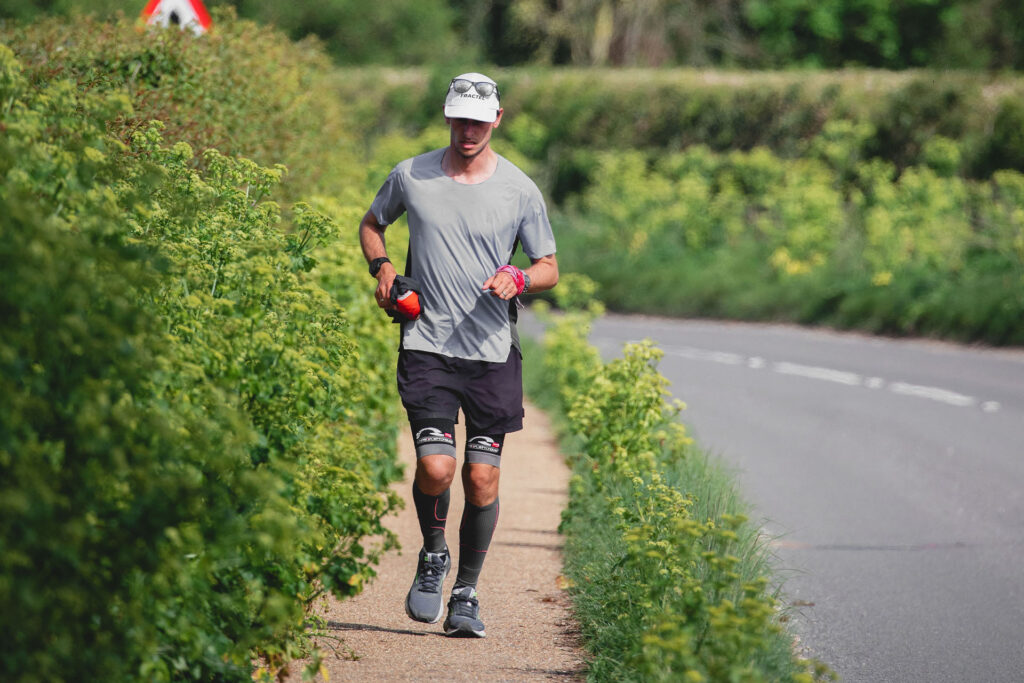Elevation masks: Do they really work?

The way you breathe while training is of great importance because it impacts physical performance. Especially in sport disciplines where endurance is key to winning, breathing will have an overall effect on your demand for oxygen.
Elevation masks, also known as workout masks or altitude masks, are said to mimic altitude training and claim to enhance performance by increasing VO2 Max, lung function, endurance, and cardiorespiratory fitness.
What are elevation masks?
In short, an elevation mask is a mask that you wear around your head and which covers your mouth, making it harder to breathe and thereby limiting the amount of air you breathe in.
Elevation masks are said to simulate training at high altitudes, a training form that has shown to be a proven method of increasing athlete’s supply of oxygen, transporting to red blood cells and increasing VO2 max (maximum oxygen uptake.)
The elevation masks are therefore supposed to work by simulating the effects of altitude training by restricting air intake, limiting the oxygen available and thereby increasing training effort.
However, studies show that the elevation masks do not cause a significant increase in VO2 max and that the masks do not lead to a greater overall improvement in performance.
Altitude training should only be performed in specific locations with higher altitudes. The adaption of the body which occurs at high altitude cannot be replicated at sea level simply by using an elevation mask.
Altitude training
Atmospheric pressure and oxygen levels are reduced at high altitudes. The air feels thinner, which is why it is more difficult to breathe and train at high altitudes. As a consequence, there is a reduced level of oxygenation in the blood, which leads to less oxygen being transported and utilized by working muscles. This causes the body grow fatigued quicker.
Spending a longer time at high altitudes will allow the body to start to adapt. It will respond to the high altitude environment and the following changes will happen:
- Increase in hemoglobin concentration due to increase in RBCs production by the release of Erythropoietin (EPO) – a hormone that controls the production of red blood cells, which are responsible for oxygen transportation.
- Increase in capillary density.
- More red blood cells are produced and the oxygen-carrying capacity increases, thereby giving your muscles more oxygen.
Therefore, these adaptations can provide athletes with aerobic performance advantages when competing at sea level.
Before your body is adapted to the high altitude, your VO2 max will decrease, as well as your training intensity and volume. Prolonged exposure to high-altitude air (which is known for a lower concentration of oxygen) results in an increase in VO2 max (the body’s ability to use oxygen) as your body increases the number of red blood cells.
Thus, this process can benefit performance. The effect of altitude training has the same effect athletes seek to reach when they take EPO. EPO activates the production of red blood cells.

Do elevation masks simulate altitude?
Even though it might seem like a good idea, it is unfortunately not so simple to transfer and imitate the conditions happening at high altitude to sea level solely by using a mask. It simply cannot simulate the real-life adaptations of altitude training.
For the same reason, the elevation masks show no significant effect on improving lung function, inspiratory muscle training or changing of the hemoglobin level. Therefore, you do not acheive any high altitude adaptations by using the elevation mask.
However, it is not actually just the training at high-altitude that results in the benefits described above. It is the continuous adaptation to the environment.
It can take weeks of living and training at high altitudes to acclimate and thus, receive the benefits. Even so, the benefit usually only lasts for a couple of weeks.
What happens when you use an elevation mask? The science speaks for itself
When you use the elevation mask, you restrict the amount of oxygen flowing into your body even though it doesn’t simulate the high-altitude training. According to research, there is no evidence that the masks increases the release of EPO and your oxygen-carrying RBCs production.
That is because the mask, in reality, does not lower the actual oxygen concentration in the air you breathe, it just simply lowers the amount of air you breathe in, thus reducing the air flow. That means the amount of oxygen is the same, but the air you breathe in is less.
And since endurance is not limited by the amount of air your body receives, but rather the amount of oxygen it receives, this form of restricted air does not work to improve your endurance.
If you were to perform in places or situations where you had limited amounts of air, the mask might be a benefit. But if not, you are solely limiting your access to air for no reason. It makes the exercise harder and will solely reduce exercise intensity and pace.
Using the mask means that training will simply make training sessions harder for no reason. However, there are studies that show that the masks had an effect on your respiratory muscles, i.e. improving their strength.
However, inspiratory muscle training which sets to improve respiratory muscle strength can be trained without limiting your access to air while training. Simply said, your endurance is limited by your ability to use oxygen.
Elevation masks and inspiratory muscle training
Instead of focusing on limiting the amount of air you have while training, as would be done with an elevation mask, you should focus on increasing the efficiency and strength of the muscular system of your breathing muscles so you can extract more of the oxygen of the air you carry, which was the goal in the first place.
Research suggests that elevations masks function more like a respiratory muscle trainer than a tool that simulates high-altitude training.
However, while the elevation mask might have an effect on strengthening your respiratory muscles, it also makes your body work unnecessarily harder at any given workload.
If you seek to improve your performance and your strength, you probably focus on improving your vital lung capacity, VO2 max, and anaerobic threshold. The answer to that is breathing training and resistance, not limited access to air.
Your respiratory muscles respond to resistance training just as any other muscle group, and performing resistance training will improve the strength and power of your respiratory muscles, resulting in greater endurance and strengthening of instant performance.
Instead of training your body to take deep, qualitative, and beneficial breaths you should take short, shallow breaths using the elevation masks. Short shallow breaths are normal as intensity increases, for example, during interval training, but there is no evidence that they are beneficial at other intensities or training forms.
Conclusion
There is no evidence that the elevation masks work. It does not improve your production of red blood cells, VO2 max or lung capacity, it only gives you limited access to air and makes the training harder.
The elevation masks actually decrease the air you are able to inhale, so you actually might as well just hold your breath.
Research suggests that elevation masks can have similar effects to inspiratory muscle training. However, it is not necessary to limit airflow during a workout to conduct inspiratory muscle training. Neither is it not beneficial to take shallow breaths during a workout, limiting the performance and length of given training.
At Airofit, we seek to improve performance through inspiratory strength training. The Airofit breathing device relies on resistance training which improves your vital lung capacity and strengthens your anaerobic tolerance.
That happens through tailored breathing exercises that fit your lung capacity and strength. Instead of restricting the amount of air available, you learn to take deeper breaths, enhancing muscle oxygenation, etc.
Learn more about Airofit here.




